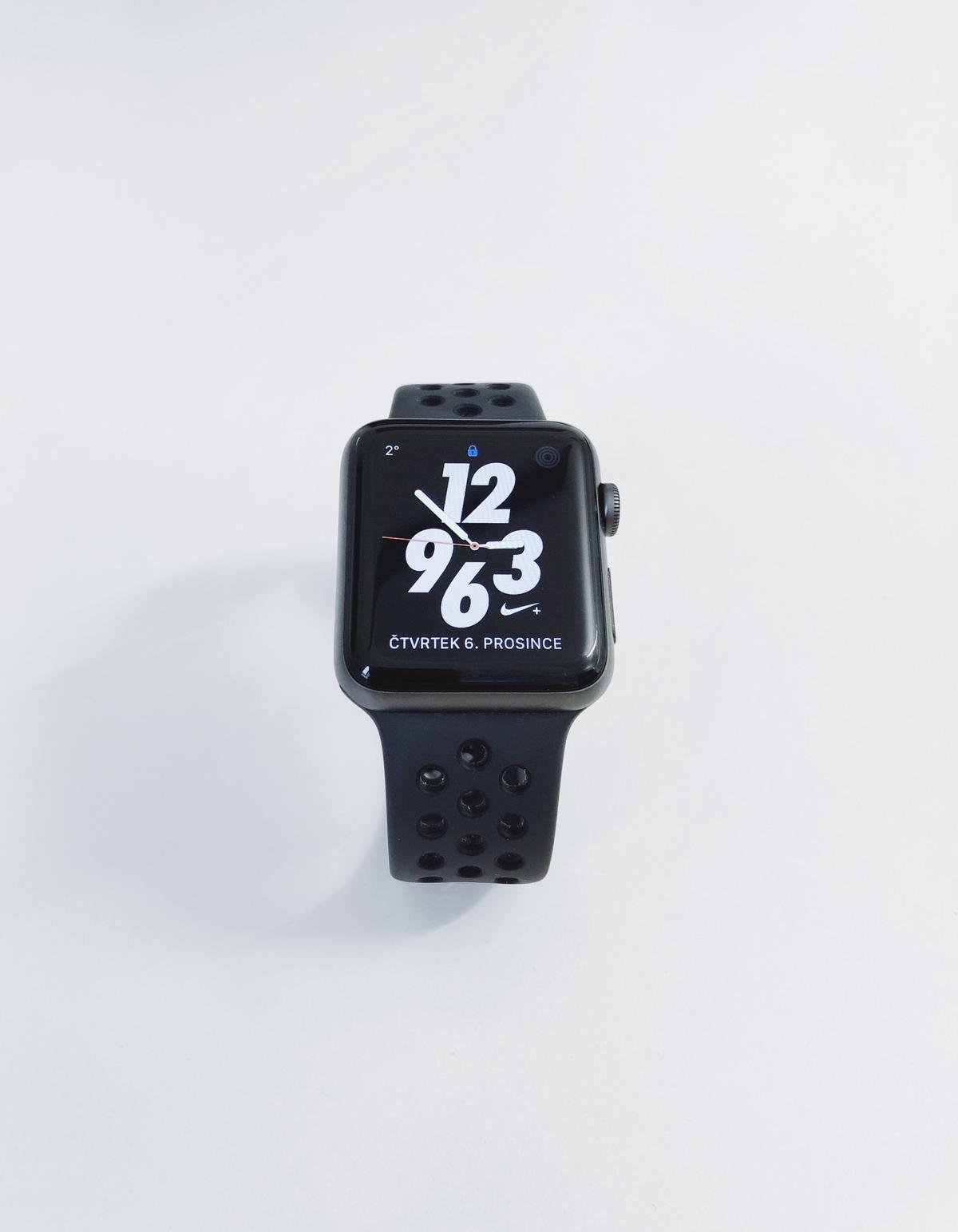Leading a healthy lifestyle often involves balancing energy in vs. energy out over time, and a significant part of this equation relates to understanding calories. Based on this foundational knowledge, we can gain a clearer concept of how different activities and exercises come into play in expending calories. At the forefront of merging fitness with technology, the Apple Watch provides us with an innovative tool to monitor our energy expenditure. This piece aims to unpack the intricate mechanisms used by the Apple Watch in the calculation and tracking of calories burnt. From exploring its built-in sensors to understanding the complex algorithms employed, we delve into how this device leverages collected data and personal information to provide reliable health metrics to its users.
Understanding the basics of Calories and Energy Expenditure
Understanding Calories: The body’s fuel
A calorie is a unit of energy that our body uses as fuel for various activities, whether it’s running a marathon or simply breathing. The body uses these calories for every function it performs, including for the cardiovascular, respiratory, and nervous systems, and for maintaining body temperature. The necessary calories for these functions are often referred to as the Basal Metabolic Rate (BMR), and represent the number of calories the body needs at rest. All these calories add up to a person’s daily energy expenditure.
Activity and Calorie Consumption
Different activities require different amounts of energy, and hence burn different amounts of calories. The more intense or strenuous the activity, the more calories are burnt. For instance, running burns more calories per hour than walking because it requires more effort and energy. A heavier individual will also burn more calories doing the same activity because their body needs to expend more energy to perform that activity.
Apple Watch and Calorie Counting
The Apple Watch uses a combination of motion data and heart rate monitoring to estimate how many calories you’re burning during the day. It combines this information with personal stats like your age, sex, weight, and height, which you enter when you set it up. The built-in accelerometers and gyroscope detect movement and the intensity of your activities, while optical heart rate sensors measure how hard your body is working.
Active Energy and Resting Energy
Apple Watch categorizes your calories into “Active Energy” and “Resting Energy”. Resting energy represents the calories your body burns at rest (BMR), while active energy represents the calories burned as a result of your activities throughout the day. This distinction helps give you a clearer picture of where your calorie burn is coming from.
Personalized Statistics
The more you use your Apple Watch, the more accurately it can estimate your calorie burn. It learns from your activities and exercise routines over time and uses that data to provide more accurate estimations in the future.
Final Thought on Apple Watch and Calories
Remember, while Apple Watch is a useful tool for tracking your calories and workout progress, it is not a medical device. The estimates provided should not replace professional medical advice. Always consult your healthcare provider for personalized health information.

Apple Watch’s Built-in Sensors
Understand the Apple Watch’s Built-in Sensors
The Apple Watch is equipped with multiple advanced sensors to accurately collect data about users’ activities and health. The built-in accelerometer and gyroscope monitor various types of movement, from steps to vigorous exercises, while the heart rate sensor uses infrared and green LED lights to detect the amount of blood flowing through your wrist which indicates your heart rate. This collected data is then used to estimate calories burned.
How Apple Watch’s Sensors Track Fitness
In the context of physical activity tracking, the accelerometer effectively measures the number of steps you take, how fast you’re moving, and it can even detect whether you’re standing or sitting. In combination with the heart rate sensor, it can measure the intensity of your activities. The more intense the activity, the higher the heart rate, and the more calories burn.
Calorie Counting on Apple Watch
Calories burned as calculated by the Apple Watch are broken down into two categories. There are ‘active’ calories and ‘resting’ calories. Active calories are the ones you burn through all kinds of movement, from taking the stairs at work to going for a workout. Meanwhile, resting calories are those that your body burns naturally, even when you’re resting and doing nothing.
When the Apple Watch calculates the total calories you have burnt, they include both active and resting calories. This gives not only an idea of how much exercise you’ve done in a day but also a measure of how your body performs fundamentally.
Additional Sensing Capability: GPS and Altimeter
For activities like running or cycling, Apple Watch utilizes GPS tracking to measure distance and speed more accurately. Furthermore, the device’s built-in altimeter provides data for elevation during activities such as hiking or climbing, adding to the total count of active calories burned.
In conclusion, the Apple Watch utilizes a range of built-in sensors to estimate the number of calories burned throughout a given period. It considers various factors such as heart rate, movement, distance covered, and elevation changes, thereby giving a comprehensive overview of your overall activity level.

Photo by iamdavid_10 on Unsplash
Apple Watch Algorithms for Calorie Counting
Basics of Calorie Counting Algorithms in the Apple Watch
The Apple Watch uses complex algorithms to calculate the number of calories burned by its wearer. Applicable data for these complex calculations includes personal data such as age, weight, and gender, as well as activity data such as movement and heart rate.
Personal Information Data
When setting up an Apple Watch, the user is required to fill in some personal information which includes weight, height, gender, and age. The Apple Watch uses this information to estimate how many calories you burn throughout the day consistently. For instance, gender is essential since men tend to have a higher muscle mass than women, and thus burn more calories. Age and weight are also fundamental considerations when calculating the number of calories a body burns daily.
Activity Data Collection
In addition to personal data, the Apple Watch also keeps track of your activity throughout the day. The primary basis for this activity tracking includes the number of steps taken, heart rate, and sometimes, elevation changes (for example during hiking or hill climbing). This activity data is collected via multiple sensors integrated into the watch, such as an optical heart sensor and an accelerometer.
Heart Rate Monitoring for Calorie Counting
One of the most significant aspects of Apple Watch’s calorie counting involves monitoring the wearer’s heart rate. The watch’s heart rate sensor uses photoplethysmography, a method that measures blood volume fluctuations to determine your heart rate. The higher your heart rate during a particular activity, the more calories you’re likely to burn, according to standard exercise science. This heart rate data is then combined with the personal information previously mentioned to create a comprehensive picture of caloric expenditure.
Active and Resting Calorie Count
Apple Watch distinguishes between active calories and resting or stationary calories. Active calories denote the calories you burn while moving or exercising, calculated from your activity data collected over the day. Resting calories refer to the calories your body burns just to stay alive, or essentially, the calories burned while you’re stationary. For the most accurate daily calorie count, your Apple Watch combines both your resting and active calories.
Advanced Algorithms for Accuracy
While the exact algorithm and calculation used by Apple Watch to measure calorie burn are proprietary, they have been designed to be quite comprehensive. The watch employs advanced machine-learning algorithms that get better at predicting the user’s calorie burn as more data is collected about the user’s activity levels and fitness. This continual process of analysis and prediction helps in providing a highly accurate estimation of daily calories burned.
Data Synchronization through Apple Health App
An additional piece of the puzzle is Apple’s Health app, where all the Apple Watch data can be synced. The Health app records all the daily calorie counts and can show a detailed breakdown of active and resting energy burned each day. By analyzing this data over time, users can track their patterns and adjust their activities to meet their calorie-burning goals.
Conclusion
It’s essential to understand that while the Apple Watch provides a useful tool for tracking caloric burn and activity, individual variations in metabolism and fitness levels can lead to some degree of variance in actual versus estimated calorie burn. Individuals intending to use these tools for weight loss or fitness goals should consult with healthcare or fitness professionals to create the most accurate plan for their needs.

Improving Calorie Count Accuracy on Apple Watch
Entering Personal Details Correctly on Your Apple Watch
The accuracy of calorie count on an Apple Watch depends largely upon the accuracy of the personal information you provide in the Health app. It calculates calories based on this data, so ensure you accurately enter your age, height, gender, and weight. Update these details as they change over time to ensure the device accurately assesses your calories burned.
Updating Weight Changes Regularly
The human body’s calorie burn rate is highly dependent on weight. If you have lost or gained weight, it is critical you update the change in the Apple Watch Health App to ensure it is accurately recording the amount of calories you burn. Your watch uses this current weight data while working out to calculate your burn rate.
Accurate Workout Types Selection
The Apple Watch allows you to select the type of workout you are performing. This feature is useful as each exercise burns calories at a different rate. By specifying whether you are running, cycling, swimming or doing yoga, for example, the device will be better equipped to calculate the calories you burn. To do this, open the Workout app, swipe right and tap the ‘+’ button to add another activity.
Wearing Your Watch Correctly
A loose watch may not read your heart rate accurately, which could affect the calculation of your calories spent. Make sure your Apple Watch band is snug but comfortable. During workout sessions, Apple recommends tightening your watch band for an improved read, and loosening it when you’re done.
Keeping WatchOS Updated
Ensure your watchOS is always up to date. Updates frequently include enhancements and bug fixes, which may improve the accuracy of the calorie count. You can check for updates in your iPhone Watch app under General > Software Update.
Correct Calibration of Apple Watch
Calibrate your Apple Watch to improve the accuracy of your distance, pace, and calorie measurements. To calibrate, bring your iPhone and Apple Watch with GPS, go to a flat, open outdoor area that offers good GPS reception and clear skies, and walk or run at a steady pace for 20 minutes.

Armed with this knowledge, you can now make the most of your Apple Watch and its calorie-tracking feature. Implementing certain strategies can significantly improve its accuracy, including updating your personal information and weight changes regularly, as well as accurately specifying your workout types. By understanding how your Apple Watch estimates your caloric expenditure, you can truly integrate it as a personal health and fitness assistant. As we continue to embrace technology in our health and wellness journeys, tools like the Apple Watch can undoubtedly make achieving our fitness goals more attainable than before.

I am Michael Wanner, an experienced and educated expert in the field of pickleball. I hold a degree in Sports Science from Cleveland State University, Ohio, USA. My expertise lies in the technical aspects of pickleball and how to play it effectively. I have spent many years playing and coaching pickleball and have a wealth of knowledge to share with my readers. I am a valuable resource for anyone looking to improve their pickleball skills and strategies.
